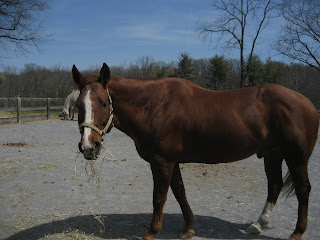Horses often have white on their faces and lower legs - but why?
One thing we do know is that they are genetically extremely complex and the extent of them is influenced by uterine environment - we know this because clones have markings in the same location as their genetic parent but not to the same extent. The genetics are complex, involving multiple genes and often affected by base coat color (which is why you see larger white markings on "red" or chestnut horses).
Why do they even exist, though?
White markings definitely confer no advantage in the wild and may be a disadvantage. Przewalski's horses have no white markings.
So, the obvious explanation is, well, humans. We like white markings...or not. They come in and out of fashion and are considered highly desirable in some breeds and utterly undesirable in others. For example, in Friesian horses and Dales cobs anything more than a tiny white mark on the forehead is considered grounds for not registering the animal. Meanwhile, Arabian breeders often like a lot of "chrome." Four whites are liked by some, but there's an old British saying of "One buy him, two try him, three suspect him, four reject him" that talks about white leg markings.
One reason why humans might have started to breed for white markings in the first place is that they do make animals easier to tell apart.
This chestnut Quarter Horse has a stripe on his face and a white sock on his off hind - quite smart!
But the wide variety of face and leg markings in horses reflects a pattern of human preferences that varies from place to place and across time.

No comments:
Post a Comment